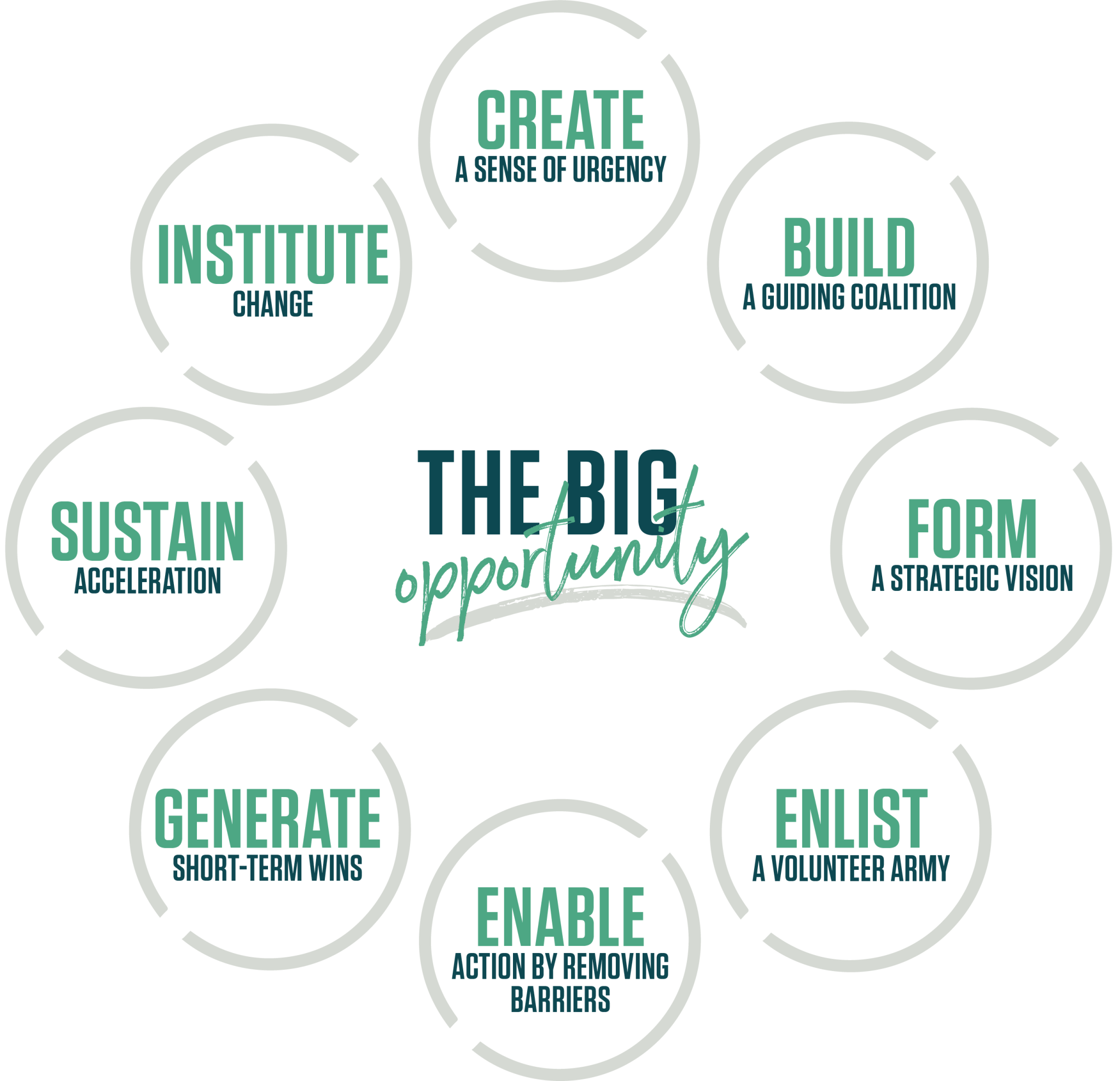When Kotter’s 8-Step Change Model Theory debuted in 1996, it was groundbreaking for the extent it recognized the social and cultural elements of change. Nearly 30 years later, there are still phenomenal ideas to borrow (e.g. urgency can be powerful, if authentic) yet the process stumbles in modern, complex environments for these reasons:
- Change is rarely linear. Practitioners can find themselves stuck or lost when their organization doesn’t neatly march from steps one through eight. And while Kotter does address change resistance, it fails to offer substantive strategies to overcome that resistance. To that end, Change Making recognizes 25 different causes of change resistance and offers strategies for each.
- Change isn’t one-sized. Kotter’s approach treats all changes the same way, whether big or small, incremental or radical, iterative or not. Moreover, today’s organizations are juggling anywhere from 10-20 concurrent changes that would be difficult, if not impossible, to manage one at a time. Change Making recognizes two distinct types of change, and can be run with a portfolio of diverse change initiatives.
- Change can no longer solely be led top-down. Today, power has been distributed (which is a nice way to say that leaders have less autocratic authority) and there are greater insights and motivation to be had by involving staff at all levels in the change. Change Making brings together cohorts across the organization in every step.
See how we compare to other change models, and why our approach works for modern organizations.
Want to Know More?
Get in touch to find out how we can help to start change in your organization
Contact Us












